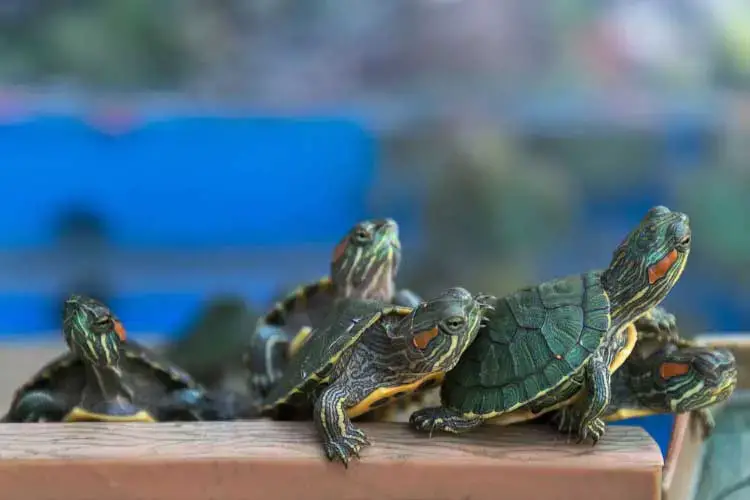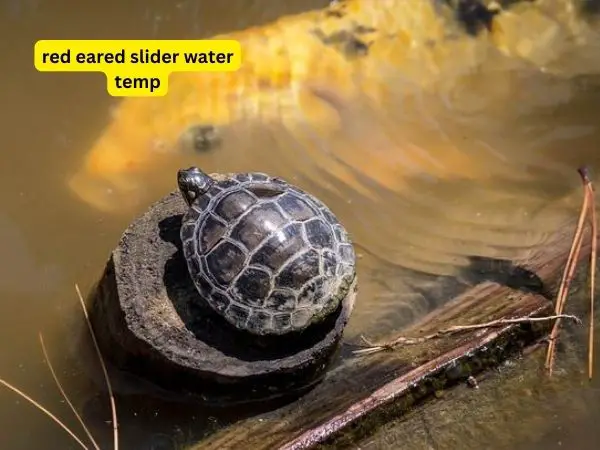Imagine you are sitting on a sandy beach, watching baby turtles make their way to the ocean. Have you ever wondered what factors contribute to their healthy growth? One crucial element that plays a significant role in their development is the temperature of the water they hatch in. In this article, we will explore how water temperature influences the growth and survival of baby turtles, shedding light on the fascinating world of these adorable creatures.
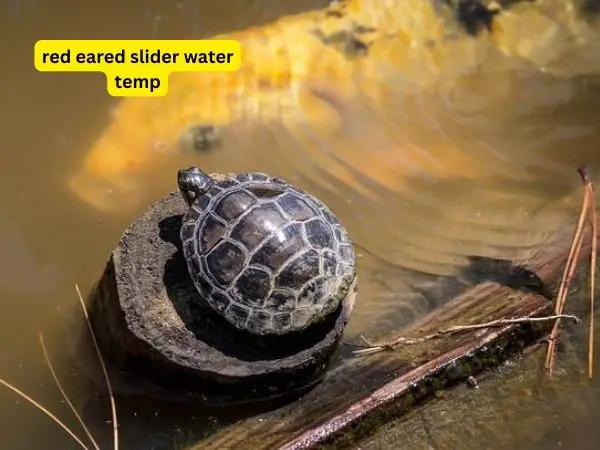
Factors Affecting Baby Turtle Growth
When it comes to the growth and development of baby turtles, several factors play a crucial role. Understanding these factors is vital in ensuring the overall well-being and success of these adorable creatures. In this article, we will explore the significance of water temperature in promoting healthy growth in baby turtles, as well as other factors that can impact their development.
Importance of Water Temperature
Water temperature is a fundamental element that can significantly influence the growth and development of baby turtles. Let’s take a closer look at how water temperature affects various aspects of their lives.
Regulating Metabolism
Water temperature plays a vital role in regulating the metabolism of baby turtles. Metabolism is the process by which the body converts food into energy to fuel various physiological functions. Optimal water temperature ensures that the metabolic processes of baby turtles function efficiently, enabling them to grow and develop properly.
Influencing Digestion
Proper digestion is crucial for baby turtles to absorb nutrients effectively. The temperature of their aquatic environment directly affects their digestion process. Water that is too cold or too warm can disrupt their digestive system, leading to inadequate nutrient absorption and potential health issues.
Affecting Immune System
The immune system of baby turtles is also sensitive to water temperature. Optimal temperatures can help boost their immune response, enabling them to fend off potential infections and diseases. However, extreme water temperatures can weaken their immune system, making them more susceptible to illnesses.
Development and Growth
Water temperature plays a significant role in the overall development and growth of baby turtles. It can influence their growth rate, skeletal development, and overall size. Maintaining the optimal water temperature ensures that these little creatures thrive and reach their full potential.
Sex Determination
Interestingly, water temperature also plays a crucial role in determining the sex of baby turtles. The temperature at which the eggs are incubated can influence the sex ratio of the hatchlings. This phenomenon, known as temperature-dependent sex determination, showcases the importance of water temperature in shaping the future population dynamics of turtle species.
Optimal Water Temperature for Baby Turtles
Determining the optimal water temperature for baby turtles is a complex task as it varies depending on various factors. Let’s explore these factors and their influence on the ideal water temperature.
Species Variations
Different turtle species have varying temperature requirements for optimal growth and development. It is crucial to research and understand the specific temperature preferences of the species you are caring for to provide them with an environment conducive to their needs.
Nesting Temperature
The temperature at which turtle eggs are laid and buried in the nest plays a crucial role in their development. The temperature inside the nest can slightly differ from the surrounding environment, and maintaining the correct nesting temperature is vital for the healthy development of the embryos.
Incubation Temperature
During the incubation period, the temperature surrounding the eggs determines the sex of the hatchlings. For example, warmer temperatures generally result in more females, while cooler temperatures tend to produce more males. Maintaining the correct incubation temperature is essential for achieving a balanced sex ratio and ensuring healthy hatchlings.
Water Temperature in Aquatic Habitats
In natural aquatic habitats, such as ponds, lakes, or oceans, baby turtles rely on the water temperature to provide the ideal conditions for their growth. Aquatic habitats with consistent and suitable temperatures allow baby turtles to thrive, ensuring their survival and successful transition to adulthood.
Temperature Gradient
Creating a temperature gradient within the turtle’s habitat is crucial. This allows them to move between different temperature zones, mimicking the natural conditions they would experience in their wild habitats. A gradient ensures that turtles can regulate their body temperature by choosing the area that suits their needs at any given time.
Methods to Maintain Water Temperature
To ensure the optimal water temperature for baby turtles, guardians and conservationists employ various methods to maintain and monitor temperature levels effectively.
Heating Equipment
In aquariums or artificial habitats, heating equipment such as water heaters or heat mats can be used to maintain a stable water temperature. These devices provide a controlled heat source, enabling baby turtles to thrive in an environment with suitable conditions.
Thermoregulation in Aquatic Habitats
In natural aquatic habitats, turtles utilize their surroundings to regulate their body temperature. They may bask in the sunlight or seek shelter in shaded areas to find the optimum temperature they require. Ensuring a diverse and suitable habitat with a balance of temperature zones allows baby turtles to actively thermoregulate.
Heating Water Tanks
For those who care for baby turtles in enclosed tanks or aquariums, heating the water tank is essential. This can be achieved by using submersible heaters that maintain a consistent temperature throughout the tank. It is crucial to choose heaters suitable for the tank size and regularly monitor the water temperature to prevent any sudden fluctuations.
Temperature Monitoring
Regardless of the method used to maintain the water temperature, regular monitoring is essential. Using thermometers or digital temperature sensors allows guardians to track and adjust the water temperature as necessary. Monitoring ensures that the baby turtles’ needs are met and helps prevent any detrimental effects caused by incorrect temperatures.
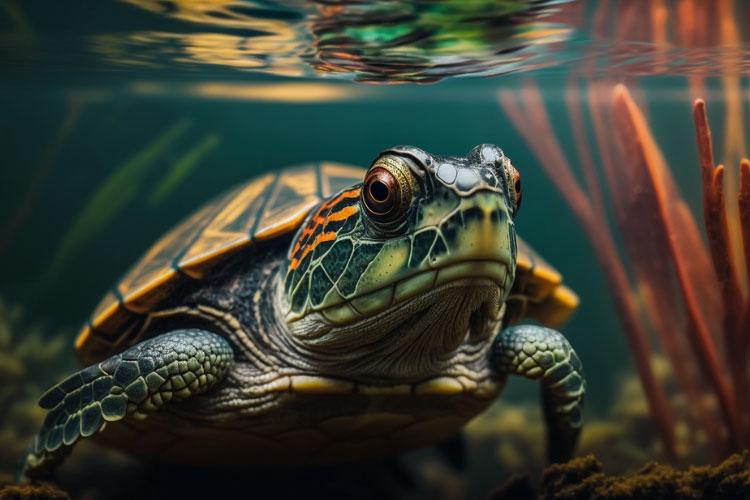
Negative Effects of Incorrect Water Temperature
When baby turtles are subjected to incorrect water temperatures, it can have detrimental effects on their growth and development. Let’s explore some of the negative consequences that can arise from inadequate temperature management.
Stunted Growth
Incorrect water temperatures can lead to stunted growth in baby turtles. If the water is too cold, their metabolism slows down, and they may struggle to absorb nutrients effectively. Conversely, if the water is too warm, their metabolic rate may speed up, depleting their energy reserves and hindering their growth.
Metabolic Disorders
Extreme water temperatures can cause metabolic disorders in baby turtles. Cold temperatures can slow down their metabolic processes, leading to poor food digestion and inadequate energy production. On the other hand, excessively warm temperatures can result in metabolic imbalances, disrupting normal physiological functions.
Digestive Issues
Water temperature that is too cold or too warm can negatively impact the digestive system of baby turtles. Cold temperatures can slow down digestion, potentially causing food to sit undigested in their stomachs. Conversely, warm temperatures can speed up digestion, leading to insufficient nutrient absorption and potential gastrointestinal issues.
Weakened Immune System
Incorrect water temperatures can weaken the immune system of baby turtles, making them more vulnerable to infections and diseases. Cold temperatures can lower their immunity, rendering them more susceptible to bacterial or fungal infections. Similarly, excessively warm temperatures can stress their immune system, making them more susceptible to pathogenic threats.
Incorrect Sex Ratios
Water temperature plays a pivotal role in determining the sex of baby turtles. Incorrect temperatures during the incubation period can lead to imbalanced sex ratios within the hatchlings. This can have long-lasting consequences for the population dynamics of certain turtle species and can impact their overall survival and genetic diversity.
Temperature Changes throughout Life Stages
The influence of water temperature on baby turtles extends beyond the embryonic and hatchling stages. Different life stages are also affected by temperature variations, which can shape the overall growth and development of these fascinating creatures.
Embryonic Development
The temperature at which turtle eggs are incubated plays a vital role in the embryonic development of the turtles. This stage is crucial for their overall development since the conditions inside the eggs, including temperature, impact the embryo’s growth and differentiation.
Hatchling Stage
After hatching, baby turtles are incredibly vulnerable and rely heavily on their environment for warmth and protection. Proper water temperature during the hatchling stage ensures their survival and provides the conditions necessary for growth and development.
Juvenile Stage
As baby turtles transition into the juvenile stage, they continue to require adequate water temperatures to support their growth and development. The right temperature allows them to thrive, enabling them to develop strong bodies and adapt to their surroundings.
Subadult Stage
During the subadult stage, turtles are still growing and developing. Optimal water temperature during this stage ensures that their skeletal development continues to progress correctly, preparing them for adulthood.
Adulthood
Even as adult turtles, water temperature remains essential. It greatly impacts their behaviors, metabolism, and reproductive abilities. Proper temperature management throughout their adult lives ensures their overall well-being and longevity.

Temperature Manipulation for Conservation Efforts
Understanding the significance of water temperature in baby turtle growth has implications for conservation efforts. Here are some ways temperature manipulation can be used to support conservation initiatives:
Increasing Hatchling Success
By manipulating water temperature during incubation, conservationists can increase hatchling success rates. Fine-tuning the temperature can help achieve a balanced sex ratio and encourage healthy development in the hatchlings, increasing their chances of survival.
Influencing Sex Ratios
Temperature-dependent sex determination provides an opportunity for conservationists to influence the sex ratios of turtle populations. Manipulating incubation temperatures can help address imbalanced sex ratios caused by habitat changes due to climate change or other human impacts.
Reintroduction Programs
Water temperature manipulation can play a crucial role in reintroduction programs aimed at restoring turtle populations in their natural habitats. By ensuring optimal water temperatures during the reintroduction process, conservationists can increase the likelihood of successful establishment and survival of reintroduced turtles.
Adaptive Management
Understanding the interaction between water temperature and turtle growth allows conservationists to implement adaptive management strategies. By monitoring and adjusting temperature conditions as needed, conservation efforts can adapt to changing environmental conditions and maximize the chances of success.
Mitigating Climate Change Effects
As climate change continues to impact natural habitats, conservation efforts can focus on mitigating the negative effects by managing water temperatures. By maintaining suitable temperature conditions, baby turtles can better cope with changing environments, increasing their chances of survival.
Interaction of Water Temperature with Other Factors
Water temperature does not act in isolation but interacts with other factors that contribute to the growth and development of baby turtles. Let’s explore how water temperature interacts with some of these key factors:
Food Availability and Temperature
Water temperature can influence the availability and quality of food sources for baby turtles. Temperature changes affect the metabolic rates of aquatic organisms, which can affect the abundance and availability of prey species. Fluctuating water temperatures can consequently impact the overall food availability for baby turtles.
Habitat Conditions and Temperature
Water temperature is closely linked to the overall habitat conditions for baby turtles. Temperature variations can impact the water quality, oxygen levels, and vegetation growth within their environment, which are all essential elements for their growth and survival.
Predation and Temperature
The interaction between water temperature and predation is complex but significant for baby turtles. Temperature variations can alter the behavior and activity levels of predators, potentially affecting the predation rates on baby turtles. Warmer temperatures can increase predator activity, posing a greater threat to the survival of baby turtles.
Disease and Parasite Susceptibility
Water temperature also influences the susceptibility of baby turtles to diseases and parasites. Extreme temperatures can stress their immune systems, making them more vulnerable to infections. Similarly, warm temperatures can provide favorable conditions for the growth and spread of certain parasites.
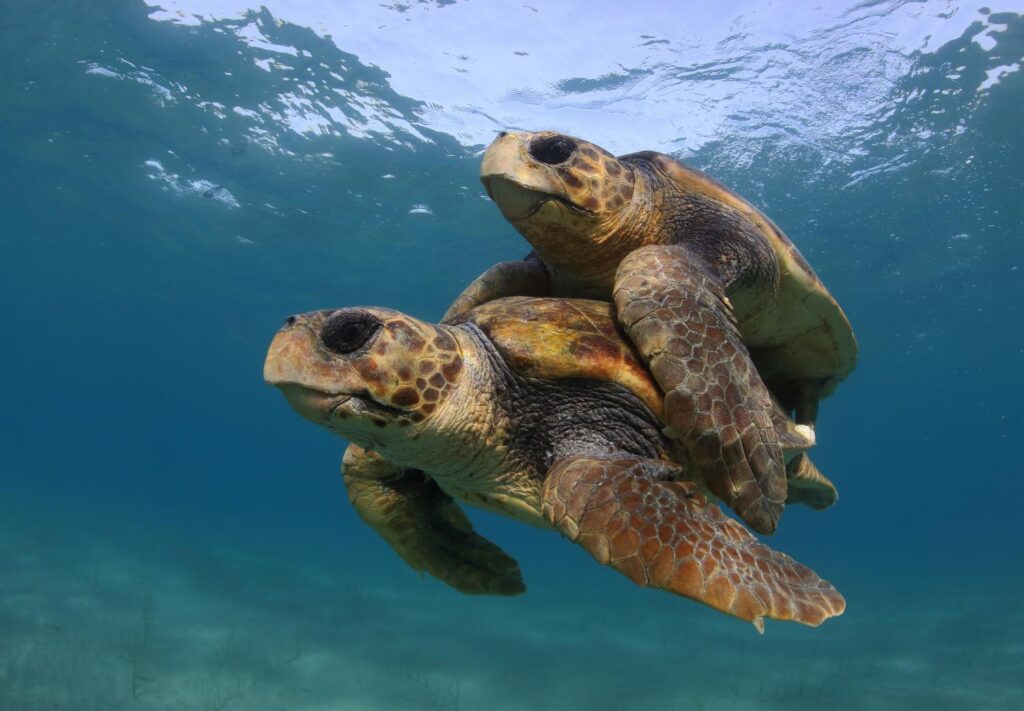
Research and Studies on Water Temperature and Baby Turtle Growth
Various research studies have focused on understanding the relationship between water temperature and the growth and development of baby turtles. These studies contribute valuable insights into the factors that affect their growth and provide guidance for their conservation.
Laboratory Experiments
Laboratory experiments allow researchers to manipulate water temperature and observe its effects on baby turtles under controlled conditions. These experiments provide valuable data that help elucidate the specific ways that temperature influences various aspects of their growth, development, and overall health.
Field Studies
Field studies involve observing baby turtles in their natural habitats, allowing researchers to assess the impact of water temperature on their growth and development. By collecting data on temperature preferences, growth rates, and behavior, field studies provide valuable information about how baby turtles interact with their environment.
Long-Term Monitoring
Long-term monitoring programs play a crucial role in understanding the long-term effects of water temperature on baby turtle growth. These programs involve tracking individuals over multiple years, collecting data on their growth rates, survival rates, and reproductive success. Such data provides insights into the cumulative effects of temperature variations on their overall population dynamics.
Comparative Analysis
Comparative analysis involves comparing different turtle species, populations, or habitats to understand the influence of water temperature on their growth and development. By assessing various variables such as temperature ranges, productivity, and population trends, researchers can identify patterns and better understand the role of temperature in shaping different ecosystems.
Meta-Analysis
Meta-analysis involves synthesizing data from multiple studies to draw overarching conclusions or identify patterns. By analyzing a large body of research on water temperature and baby turtle growth, meta-analysis provides a comprehensive understanding of the factors involved and the general trends observed.
Conclusion
Water temperature plays a crucial role in the growth and development of baby turtles. From regulating metabolism to influencing sex determination, temperature has far-reaching effects on these adorable creatures. Proper temperature management is vital to ensure their overall well-being and successful transition into adulthood. Understanding the interaction between water temperature and other factors affecting baby turtle growth is essential for effective conservation efforts. Further research and studies should continue to explore the complex relationship between water temperature and baby turtle growth, leading to improved strategies for their conservation and the preservation of these remarkable creatures.
